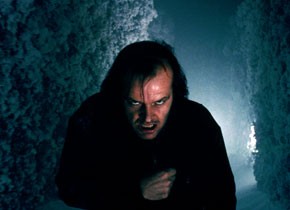Land of the Dead
Horror Movies 1968-1987
August 29 to October 15, 2014
"It is a mistake to think that the dead are dead." (Heiner Müller)
Whereas Part One of the Film Museum's large-scale horror film retrospective covered half a century of cinema history in which the genre (literally) had to make a name for itself and reached its first "Golden Age," this second series focuses on a relatively small time span. The rapid increase in horror film production after 1968 went led to an equally swift transformation of the genre as such. Ever more radical positions were taken in quick succession regarding aesthetics as well as content, not least because violence could now be portrayed more openly (a factor which soon became a commercial prerequisite). A parallel thread of modern horror cinema tried to repurpose older traditions of “fantastic” storytelling for a changing cultural landscape: literary ambitions and subtle scares went hand in hand with the violent escalation of cinematic shocks – sometimes within the same film.
For the culture at large as well as for horror films, “1968” marks a clear transition: In the U.S., the Production Code had just been abandoned, eliminating many constraints and allowing George A. Romero to lay the groundwork for a new era of horror with his debut feature, Night of the Living Dead. The film's pseudo-documentary style (necessitated by the miniscule budget) suffused Romero's taboo-breaking conceits with a hitherto unknown “authenticity”, while the allegorical potential of the zombie invasion inaugurated a new, “direct” political dimension in the genre – images of a nation gripped by self-destructive chaos in the era of the civil rights movement and the Vietnam War. During the 1970s, American horror cinema would deliver a series of pungent, subversive visions in the guise of cheap exploitation, in radical opposition to the appeasing images of society in the media mainstream. As the key auteur of this movement – his Dawn of the Dead is unsurpassed among populist critiques of capitalism – Romero is the best-represented filmmaker in the series (which takes its title from one of his later political pamphlets). However, 1968 is also the year in which the global success of Roman Polanski's Rosemary's Baby turns the once-disreputable horror genre into an attractive option for bigger mainstream productions; its respectability is further certified by contributions from major art filmmakers such as Ingmar Bergman’s Hour of the Wolf or Federico Fellini’s Toby Dammit.
In 1968, England's fantastic cinema also reached its apex with Terence Fisher's masterpiece, The Devil Rides Out, while the brutal deconstruction of an arrogant creator in his subsequent Frankenstein Must Be Destroyed (1969) already anticipated the (self-)destruction of British horror production during the next decade – even as films like The Wicker Man and Nicolas Roeg's Don't Look Now still managed to carve out highly unusual genre paths. Roeg's baroque extrapolation from a short story by Daphne du Maurier parallels similar attempts in Europe to translate notoriously “unfilmable” literary works into stunning cinematic phantasmagorias: Fellini's Edgar Allen Poe adaptation, Harry Kümel's Malpertuis (based on Jean Ray's key novel of Belgian fantastic literature) or Wojciech Has' The Hourglass Sanatorium, freely derived from Bruno Schulz, the "Polish Kafka."
The crucial spark for modern horror films, however, sprang from a transatlantic exchange: the bloody gore effects in 1960s U.S. exploitation cinema inspired the masters of Italian giallo horror, whose works proved immediately influential across the ocean. In 1971, with Reazione a catena / Bay of Blood, Mario Bava fashioned the template of the slasher movie. John Carpenter's perfectly composed Halloween harvested the evil seed in 1978 and became the most influential film of the following decade. The stupendous stylizations in Dario Argento’s nightmarish Profondo Rosso and Suspiria elevated the giallo to the level of cinéma pur, while Lucio Fulci's rousing provincial shocker Don’t Torture a Duckling produced feedback with Tobe Hooper's backwoods horror classic, The Texas Chainsaw Massacre.
During the post-1978 “boom era”, the majority of Western-made horror films would soon segue into weak imitations of these formulas. But there are exceptions which prove the rule: When a Stranger Calls, directed by forgotten genius Fred Walton, Sam Raimi's delirious debut The Evil Dead, or Wes Craven's surreal Nightmare on Elm Street. Raimi, Stuart Gordon or – in Germany – Jörg Buttgereit with Nekromantik also represent the last stand of underground invention in the 1980s, before horror cinema increasingly dissolved into post-modern self-referentiality.
"Land of the Dead“ presents the cornerstones of this development – partly in longer versions never before shown in Austria (e.g. Stanley Kubrick's The Shining and Joe Dante's Gremlins) – and relaters them to an international context of reciprocal influences. The selection includes several important (and often neglected) horror films from Asia, the emerging Australian film industry, and the strong tradition of the fantastic in the Spanish-speaking world, as well as contributions from visionary loners like Frenchman Jean Rollin and Canadian David Cronenberg.
The program includes 42 works, several of which will be introduced by Christoph Huber and Hans Langsteiner.
